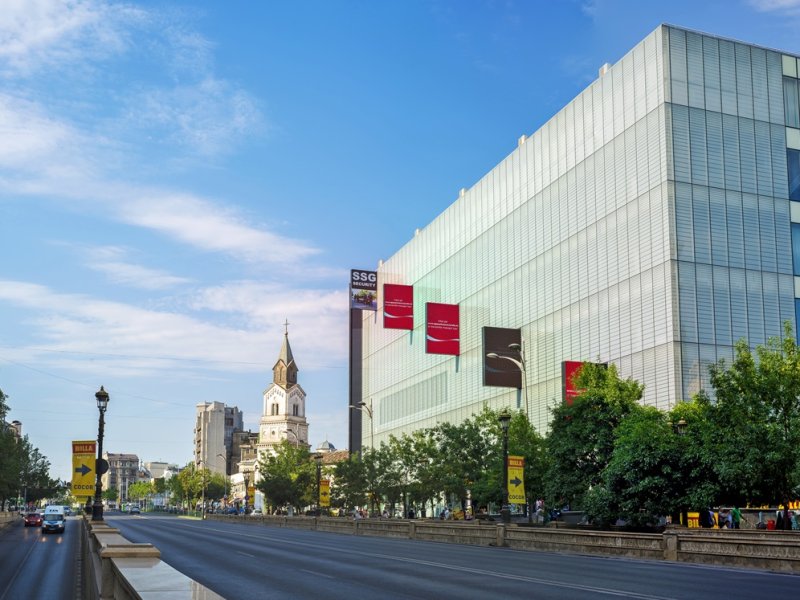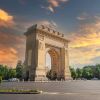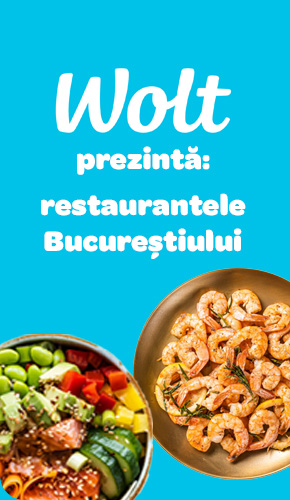Magazinul Cocor – From Socialist Beacon to Urban Time Capsule

By Bucharest Team
- Articles
Cocor is one of those rare places in Bucharest where the past hasn't been entirely erased. Situated on I.C. Brătianu Boulevard, this department store has never been just a commercial space. Over the years, it's played many roles — urban landmark, symbol of socialist pride, sleek modern mall, and today, a half-empty building that echoes the city’s ongoing metamorphosis.
Birth of a giant
Built between 1965 and 1973, Cocor opened during Romania’s socialist golden age, a time when Bucharest was being reshaped with architectural ambition and political intent. Its modernist facade, clean geometry, and large glass panels projected a carefully curated image of progress and urban development. It quickly became one of the capital’s largest department stores, joining the ranks of other state-run shopping icons like Unirea, București, and Eva.
For many families, shopping at Cocor was a ritual. It was where you bought “the good clothes,” fine leather shoes, or wedding gifts. The perfume section on the ground floor lured women with locally made glass bottles from Flora, while upstairs, rows of Romanian textiles and knitwear drew in steady crowds.
Reinvention after the Revolution
After 1989, Cocor followed the path of many post-socialist spaces: confusion, privatization, then attempts at revival. Between 2008 and 2010, the building underwent an ambitious €25 million renovation. The facade was transformed, wrapped in a massive LED screen — the first of its kind in Romania — meant to evoke a local version of Times Square or Shibuya. It was a bold statement: Bucharest was changing, modernizing, glowing.
When it reopened in late 2010, Cocor had rebranded as a shopping mall. With five floors and over 100 stores, including a full floor dedicated to Romanian designers, it stood out as a fresh concept in a market saturated with foreign brands. But despite the effort, its location — just outside the commercial epicenter — and the fierce competition from newer malls left it struggling to attract consistent foot traffic.
A present in limbo
Today, Cocor feels like a pause button pressed mid-transition. It's still open, but only partially alive. Several floors are empty or sparsely rented. Some of the international brands have left, replaced by smaller, local ventures. The ground floor remains the most active, offering souvenirs and fashion, especially to tourists passing through the city center. At night, the LED screen still glows above Union Square, projecting ads or cultural messages into the Bucharest skyline.
Cocor is no longer what it once was — but it hasn’t vanished either. It sits in a quiet liminal space, between the weight of its past and the uncertainty of its future. And perhaps this is its quiet power: to reflect, in its very architecture and fate, the story of Bucharest itself — a city in perpetual reinvention, where even the ghosts of socialism live side by side with digital billboards and designer labels.
Also recommended What once was, what remains – iconic communist-era department stores and what they’ve become






























